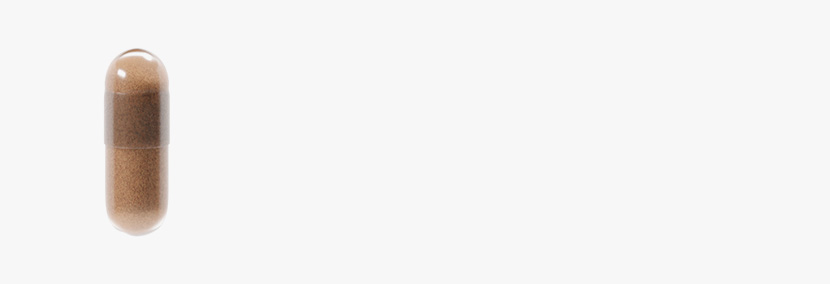Lumigan
Lumigan vs Latanoprost – How Do the IOP Treatments Compare?
Aug 27, 2025
Glaucoma and ocular hypertension affect millions of people worldwide, and one of the most critical steps in managing these conditions is lowering intraocular pressure (IOP). A 2023 review confirmed that prostaglandin analogues remain the most effective first-line treatment, with latanoprost and bimatoprost reducing eye pressure by about 25% on average. Their strong track record, convenient once-daily dosing, and generally safe profiles have made them the backbone of glaucoma therapy.
Among the most commonly prescribed options are Lumigan (bimatoprost) and Latanoprost. Both medications work in a similar way by improving the outflow of fluid from the eye. However, subtle differences in their molecular structure, formulation, and tolerability can affect how patients respond to treatment. These distinctions may also influence side effects, comfort, and long-term adherence—factors that can be just as important as efficacy.
In this article, we’ll take a closer look at Lumigan vs Latanoprost, comparing their effectiveness, safety, cost, and practical considerations to help patients and providers make more informed treatment choices.
Key Takeaways
- Lumigan (bimatoprost) and Latanoprost are widely used to lower intraocular pressure (IOP) in glaucoma and ocular hypertension.
- Both primarily enhance uveoscleral outflow, with Lumigan also showing a modest effect on the trabecular meshwork.
- Lumigan may provide slightly stronger IOP reduction, which can be valuable for patients with advanced disease or faster progression.
- Lumigan is more commonly associated with eye redness and cosmetic changes, such as eyelash growth and skin darkening.
- Latanoprost is linked to a slightly higher risk of iris pigmentation changes; both drugs can cause these effects.
- Once-daily evening dosing supports strong adherence, but tolerability and cosmetic concerns may influence long-term use.
- Generic latanoprost is generally more affordable (approximately $5–$15 in the U.S. without insurance), while generic bimatoprost (Lumigan) typically costs $50–$100.
- The choice between them depends on a balance of efficacy, side effect profile, patient comfort, and cost, guided by the ophthalmologist’s assessment.
About: Medical Spa RX provides medical practices with premium products at the best prices. If you’re looking to buy Wegovy online for your practice, the sales representatives at Medical Spa RX can give you guidance.
Mechanism of Action Comparison: Lumigan vs Latanoprost
Lumigan (bimatoprost) is classified as a prostamide, while Latanoprost is a prostaglandin analog. Both lower intraocular pressure (IOP) by increasing the outflow of aqueous humor from the eye, but there are subtle differences in how they achieve this.


- Lumigan (bimatoprost): Primarily enhances uveoscleral outflow, but also exerts a modest effect on the trabecular meshwork, the eye’s primary drainage system. This broader activity may give it an edge for patients who require stronger pressure reduction, particularly those with advanced or rapidly progressing glaucoma.
- Latanoprost: Acts mainly through the uveoscleral pathway as well, though some studies suggest it also has a minor effect on trabecular outflow. While its action is slightly narrower, it remains highly effective for many patients.
These distinctions help explain why one medication may be more effective than another for certain individuals. Tailoring therapy to a patient’s response and tolerability is central to long-term glaucoma management.
Efficacy in IOP Reduction: Lumigan vs Latanoprost
When comparing effectiveness, both Lumigan and Latanoprost are reliable at lowering IOP. However, clinical evidence suggests there are measurable differences in potency.
- Lumigan: In randomized clinical trials, bimatoprost has achieved mean IOP reductions of around 7–8 mmHg over 3–6 months, with results consistently outperforming latanoprost at several time points. Recent network meta-analyses (2022–2024) also rank bimatoprost as one of the most effective prostaglandin-related agents for IOP lowering. This makes Lumigan a strong choice for patients at high risk of disease progression.
- Latanoprost: Demonstrates average reductions of 6–7 mmHg in similar studies. While the effect is slightly less pronounced, its balance of efficacy, tolerability, and affordability supports its role as a first-line therapy.
Even small differences in IOP reduction can matter, particularly in patients with advanced disease or aggressive progression. This is why ophthalmologists may consider Lumigan for more challenging cases, while latanoprost remains an excellent baseline treatment.
Side Effect Profile: Lumigan vs Latanoprost
Both medications are generally well tolerated, but their side effect profiles differ in meaningful ways. Patients and clinicians often weigh these differences alongside efficacy.
- Lumigan side effects more often include ocular hyperemia (eye redness), which can be bothersome for some patients. Eyelash growth and eyelid skin darkening are also more pronounced with bimatoprost, resulting in a stronger cosmetic impact.
- Latanoprost carries a slightly higher reported risk of iris pigmentation changes, particularly in individuals with lighter-colored irises, though this effect can occur with either drug.
- Other possible reactions include mild dryness or irritation, which tend to improve as the eyes adjust. Rarely, systemic effects like headache or dizziness may be reported, but these are uncommon and usually resolve without intervention.
Most of these side effects are mild and non-threatening. However, cosmetic changes, such as lash growth or pigmentation, may be permanent. If redness or irritation impacts daily comfort, switching medications can help balance efficacy with tolerability. For patients concerned about redness, latanoprost may be preferred, while those needing stronger IOP reduction may benefit from Lumigan.
Dosing, Adherence, and Cost: Lumigan vs Latanoprost
Both Lumigan and Latanoprost are taken as once-daily ophthalmic drops, most often in the evening. This simple routine supports adherence, which is crucial for chronic conditions like glaucoma.


- Lumigan: Available in 0.01% and 0.03% strengths, it begins lowering IOP within hours and sustains its effect for a full 24 hours. Some patients, however, experience more redness or irritation, which can affect adherence over the long term.
- Latanoprost: Prescribed widely in its generic form (Xalatan), it has a favorable tolerability profile and is less likely to cause eye redness. Its strong safety record makes it a common first-line option.
Cost considerations are significant:
- In the United States, generic latanoprost can cost as little as $5–$15 for a 2.5 mL bottle without insurance.
- Lumigan, even in generic bimatoprost form, is often higher, ranging from $50–$100 depending on the formulation, market, and insurance coverage.
These are approximate U.S. retail prices and vary by region and pharmacy. In many markets, generic bimatoprost remains substantially more expensive than generic latanoprost, which often makes price the deciding factor for patients without coverage.
Conclusion
Both Lumigan (bimatoprost) and Latanoprost are highly effective medications for lowering intraocular pressure in glaucoma and ocular hypertension. Lumigan may provide slightly greater pressure reduction, while latanoprost is often more comfortable and affordable. The choice between the two should be guided by:
- Clinical trial data on efficacy
- Individual side effect tolerability
- Long-term adherence potential
- Cost and generic availability
Ultimately, treatment decisions are personalized. Ophthalmologists balance efficacy, comfort, and accessibility to protect vision and meet each patient’s long-term eye health needs.
FAQs
1. How does Lumigan work?
Lumigan increases fluid drainage from the eye primarily through the uveoscleral pathway, with some effect on the trabecular meshwork, lowering IOP effectively.
2. How often should Lumigan be used?
It is usually prescribed once daily in the evening, maintaining stable pressure control overnight while supporting adherence.
3. What are the most common side effects?
Eye redness, mild irritation, and cosmetic changes like eyelash growth are the most common, and many improve as treatment continues.
4. Can Lumigan cause permanent eye color changes?
Yes. Both Lumigan and latanoprost can cause gradual iris darkening, and this change may be permanent even if treatment is stopped.
5. Is there a generic version available?
Yes, generic bimatoprost is available, though it is often more expensive than generic latanoprost in many regions.
6. Can Lumigan be used with other glaucoma medications?
Yes. It is sometimes prescribed alongside other IOP-lowering drops when a single therapy does not achieve the target pressure.
Talk with our sales representative.
Book a Meeting
References
Subbulakshmi S, Kavitha S, Venkatesh R. Prostaglandin analogs in ophthalmology. Indian Journal of Ophthalmology. 2023;71(5):1768-1776. doi:10.4103/ijo.ijo_2706_22
Day DG, Walters TR, Schwartz GF, et al. Bimatoprost 0.03% preservative-free ophthalmic solution versus bimatoprost 0.03% ophthalmic solution (Lumigan) for glaucoma or ocular hypertension: a 12-week, randomised, double-masked trial. British Journal of Ophthalmology. 2013;97(8):989-993. doi:10.1136/bjophthalmol-2012-303040





